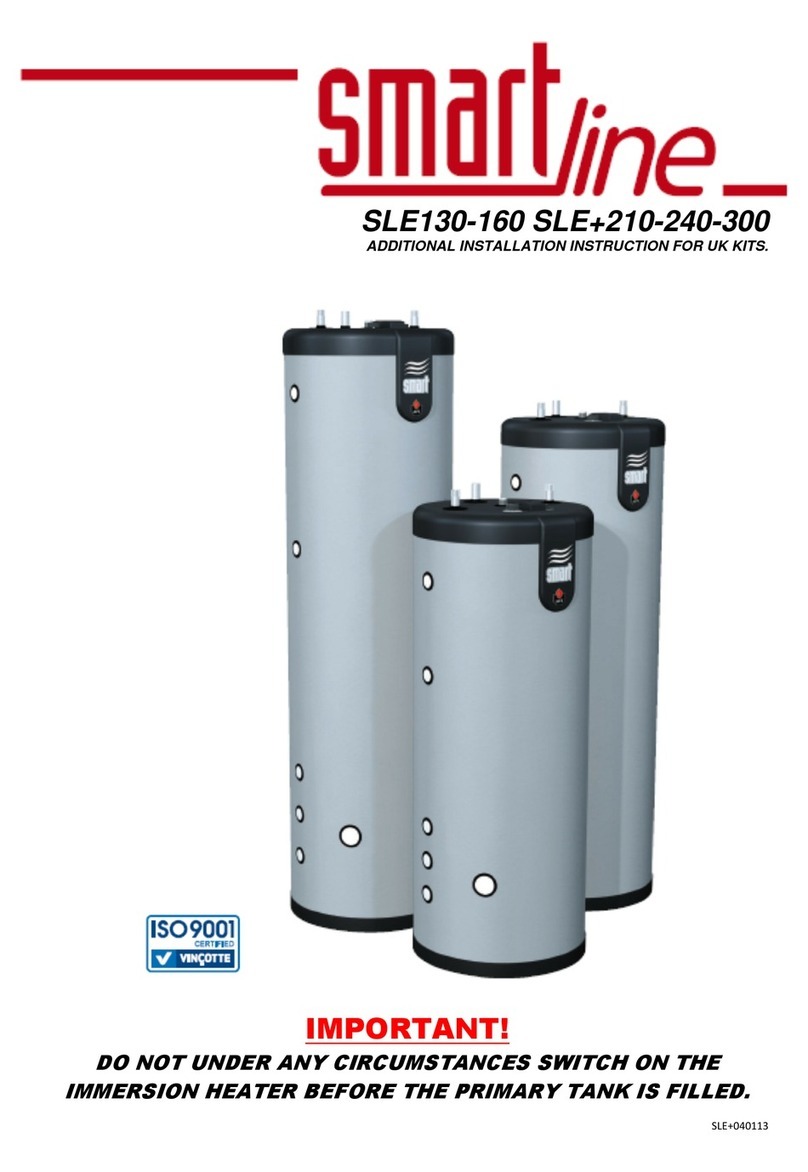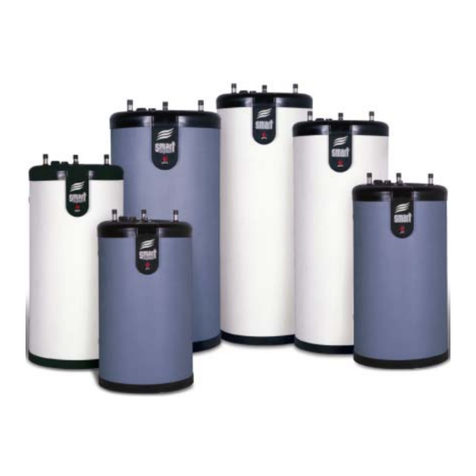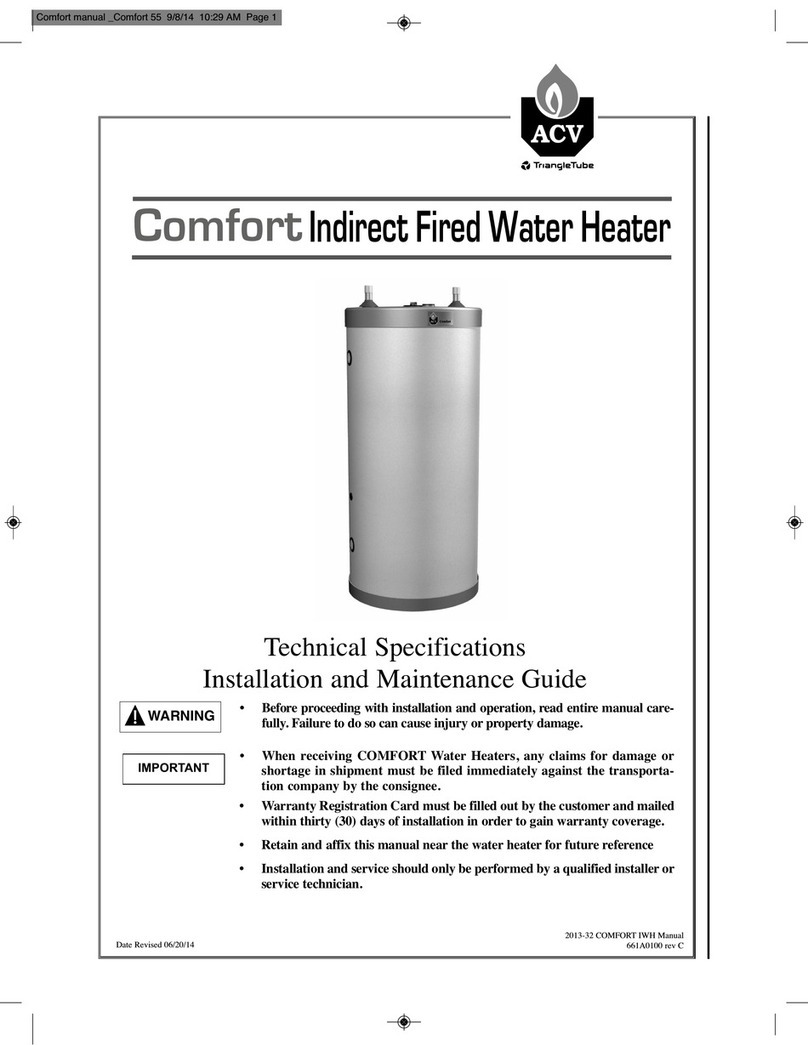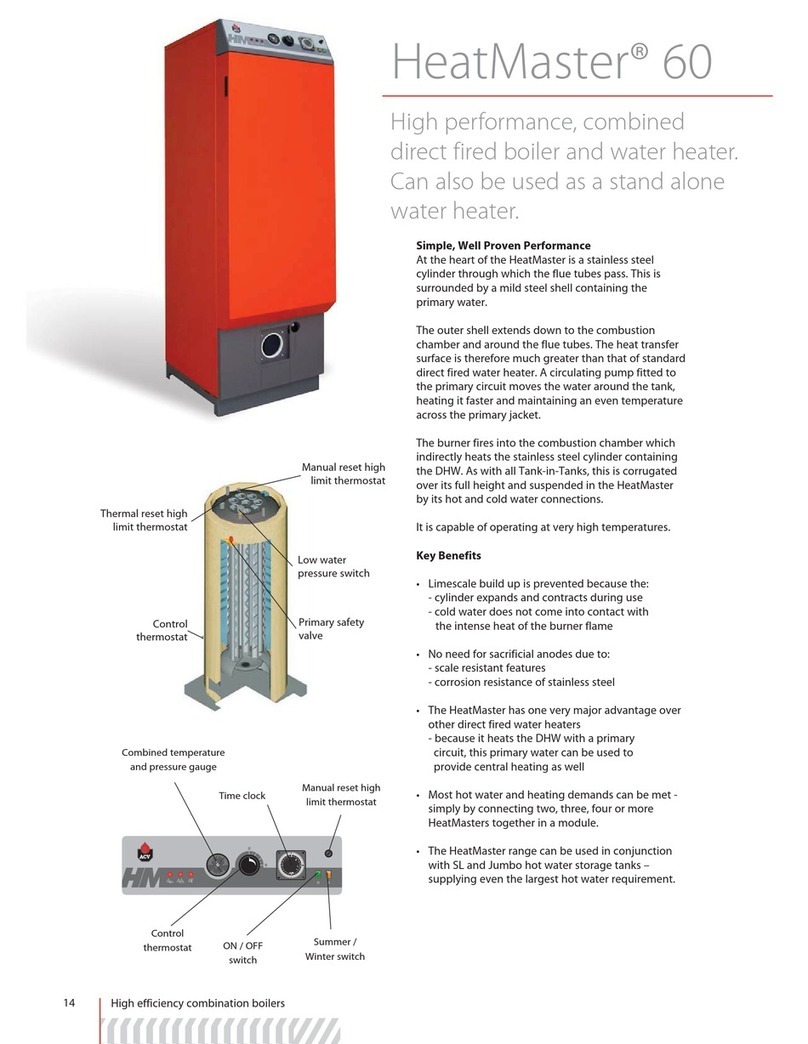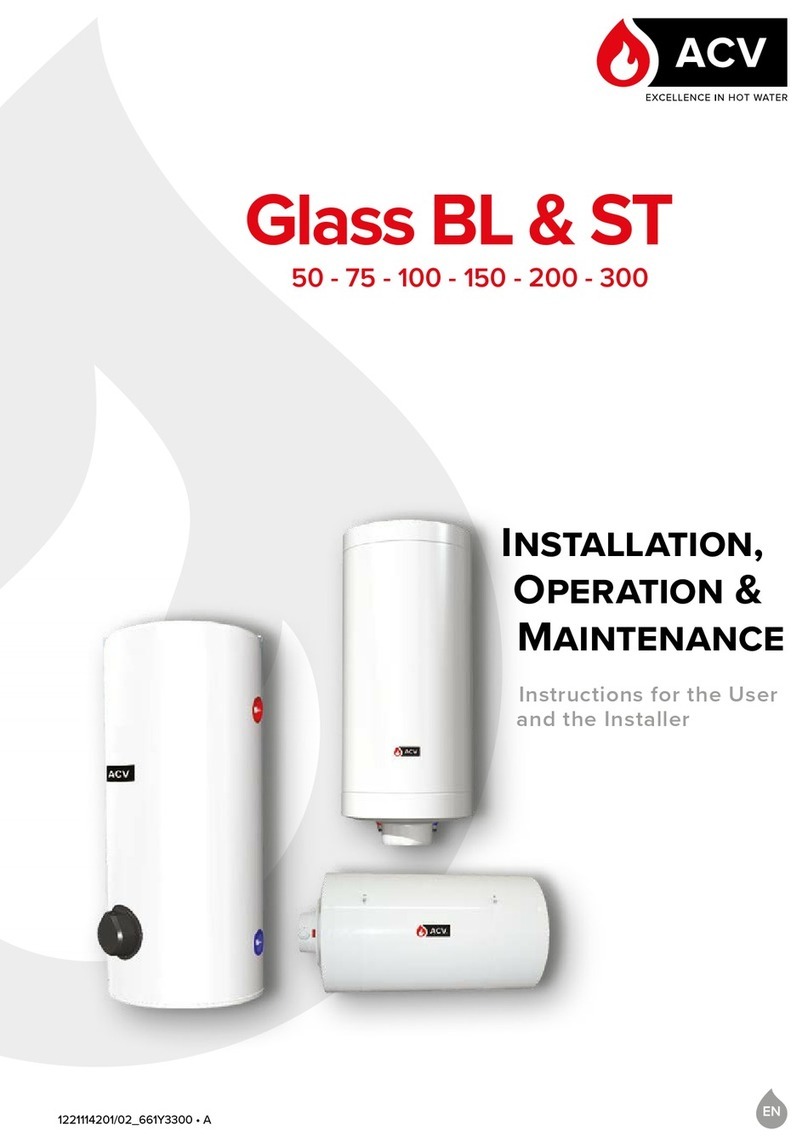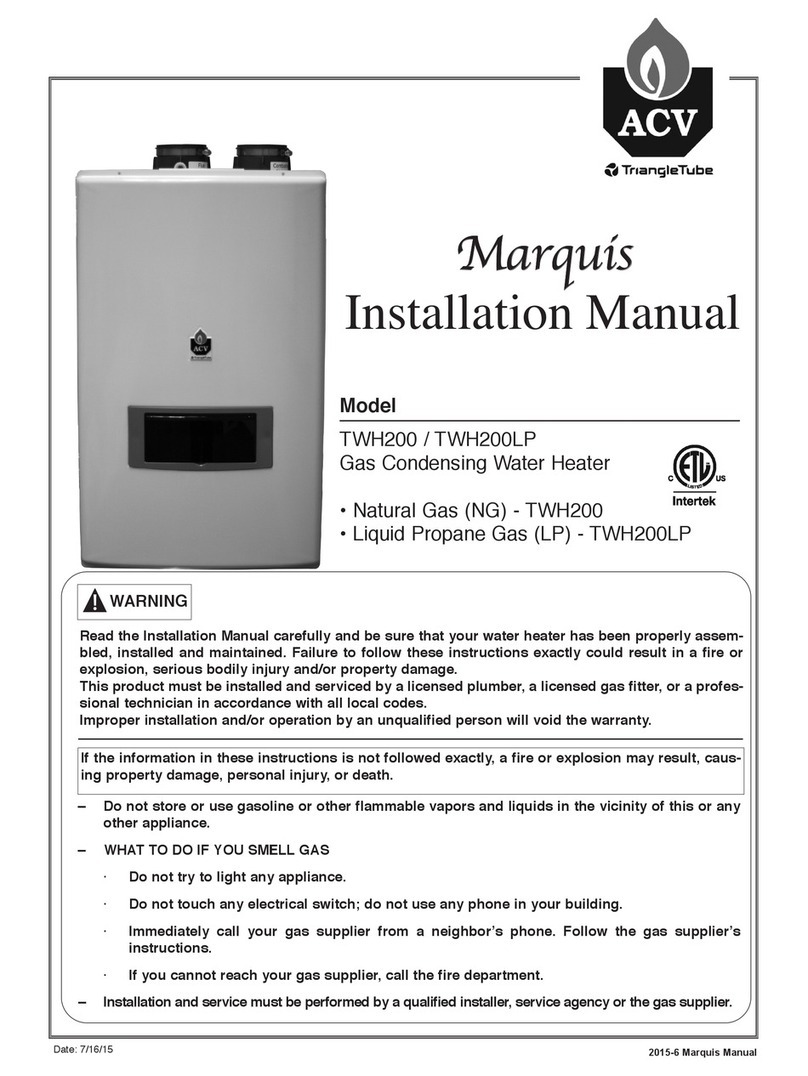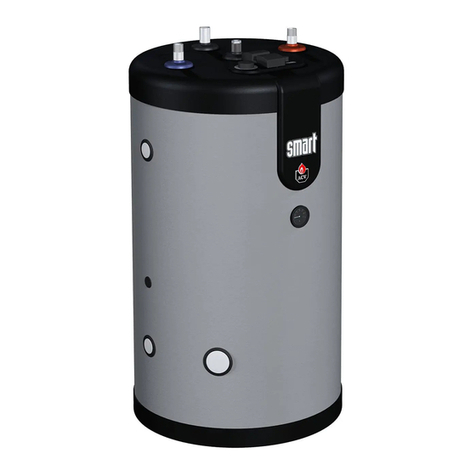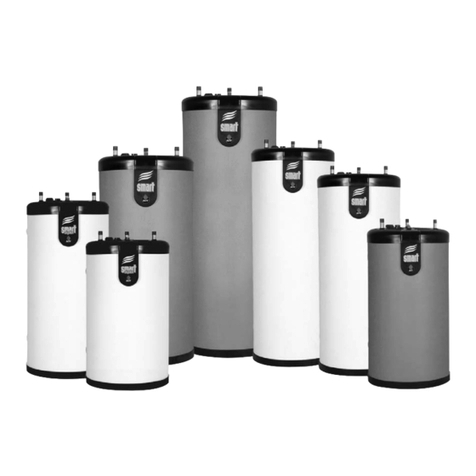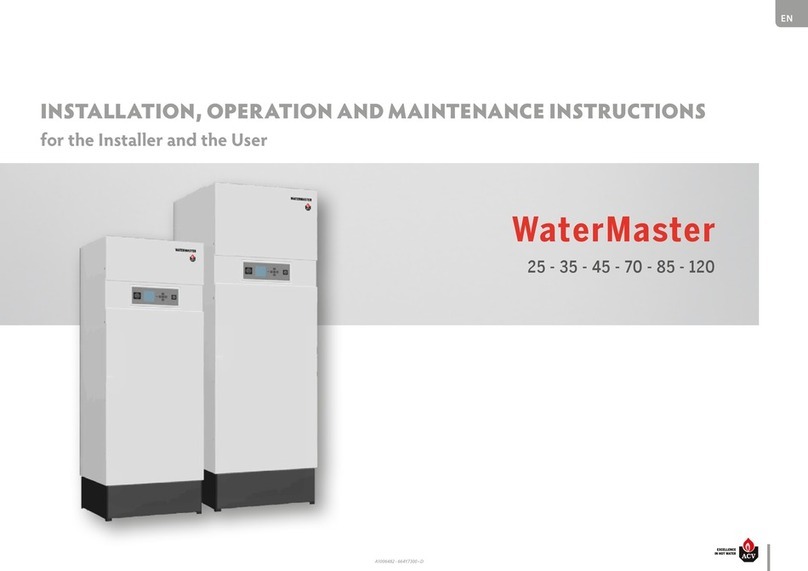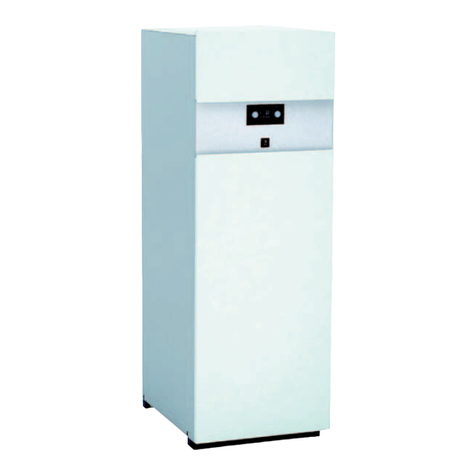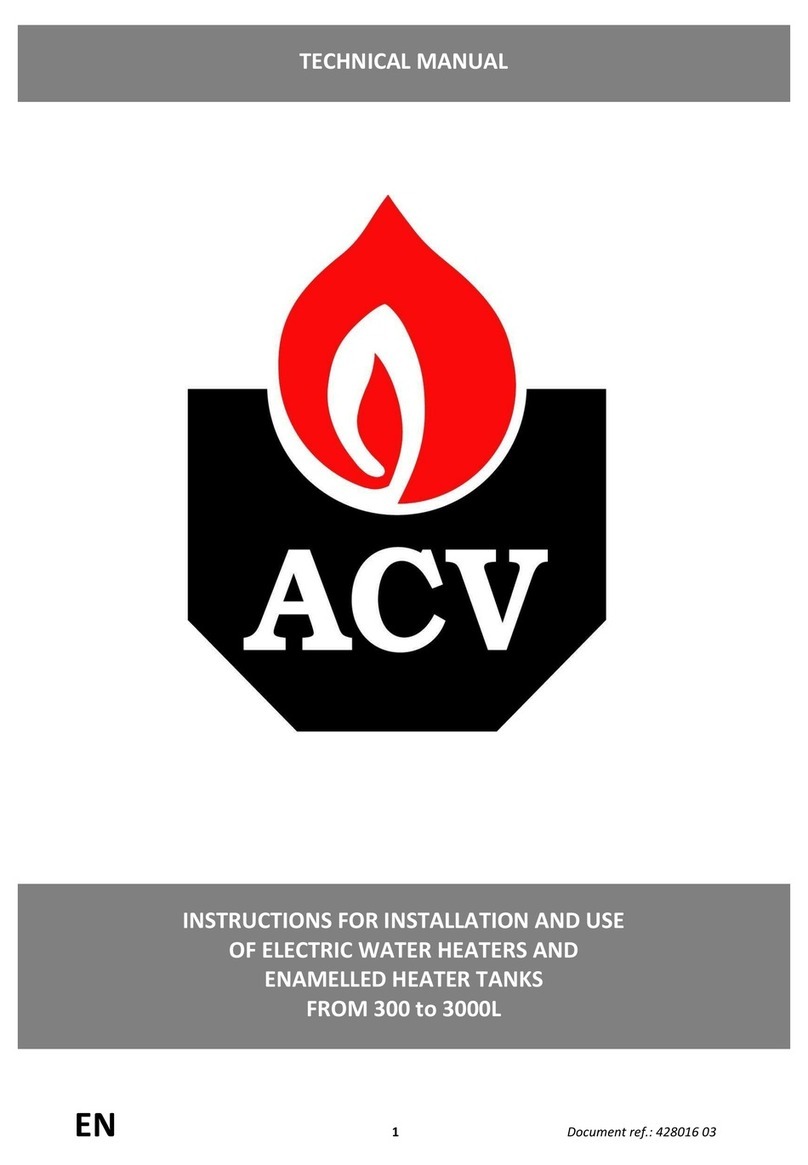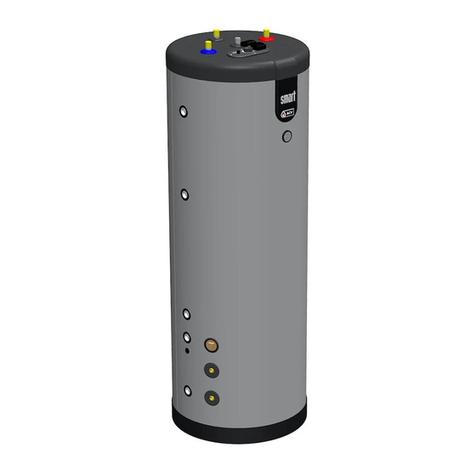
A1009341-664Y8300 • B
FLUE PIPE CONNECTION TYPES
It is mandatory to use ACV flue systems to
connect the appliance.
B23p: Connection to a combustion product exhaust sys-
tem designed to operate with positive pressure.
B23 Connection to an exhaust duct that discharg-
es the combustion products outside the room
where it is installed, with the combustion air be-
ing drawn directly from the boiler room.
C13(x) Connection using pipes fitted with a horizontal ter-
minal that simultaneously takes in combustion air
for the burner and discharges combustion prod-
ucts outside through openings that are either con-
centric or close enough together to be subjected
to similar wind conditions, i.e. openings shall fit in-
side a square of 50 cm for appliances up to 70 kW
and inside a square of 100 cm for appliances above
70 kW.
C33(x) Connection using pipes fitted with a vertical ter-
minal that simultaneously takes in fresh air for the
burner and discharges combustion products out-
side through openings that are either concentric
or close enough together to be subjected to sim-
ilar wind conditions , i.e. openings shall fit inside a
square of 50 cm for appliances up to 70 kW and
inside a square of 100 cm for appliances above
70 kW.
C43(x) Connection using two pipes to a collective duct
system serving more than one appliance; this
system of collective ducts features two pipes
connected to a terminal unit that simultaneously
takes in fresh air for the burner and discharges
the combustion products outside through open-
ings that are either concentric or close enough
together to be subjected to similar wind condi-
tions. C43(x) appliances are suitable for a con-
nection to a natural draught chimney only.
C53(x) Connection to separate ducts for supplying
combustion air and discharging combustion
products; these ducts may end in zones with
dierent pressure levels, but are not allowed to
be installed on opposite walls of the building.
C63(x) Type C appliance meant to be connected to a sys-
tem for supplying combustion air and discharging
combustion products, that is approved and sold
separately (Prohibited in some countries (e.g.
Belgium) - refer to local regulations and stand-
ards in force). Terminals for the supply of com-
bustion air and for the evacuation of combustion
products are not allowed to be installed on oppo-
site walls of the building. See also the following
additional specifications:
• Maximum allowable draught is 200 Pa.
• Maximum allowable pressure dierence between
combustion air inlet and flue gas outlet (including
wind pressures) is as follows: 95 Pa (WM 25 (X)
Evo), 130 Pa (WM 35-45 (X) Evo), 110 Pa (WM 70 (X)
Evo), 160 Pa (WM 85 Evo) and 170 Pa (WM 120 Evo).
• Condensate flow is allowed into the appliance.
• Maximum allowable recirculation rate of 10% un-
der wind conditions.
C83(x) Connection using a single or double duct sys-
tem. The system is made of a normal exhaust
flue duct that discharges the combustion prod-
ucts. The appliance is also connected through a
second duct fitted with a terminal, that supplies
the burner with fresh outdoor air. Please con-
tact your ACV representative for the meters
of flue pipes that can be used to connect the
appliance(s).
C93(x) Connection using an individual system whose
combustion product exhaust duct is installed in
an exhaust duct that is integral with the building.
The appliance, the exhaust duct and the termi-
nal units are certified as an inseparable assem-
bly. Minimum usable diameter for the vertical
duct supplying the combustion air is 100 mm.
The C93 configuration enables airtight
operation in a pre-existing chimney. The
combustion air crosses the space between
the tubing and the pre-existing chimney.
Make sure to clean the pre-existing chimney
thoroughly prior to installation, especially if
there is soot or tar residue. Make sure that
there is a clearance area for the combustion
air at least equivalent to the area that would
have been provided by separate concentric
ducts or air intake ducts.
Technical Specifications




















